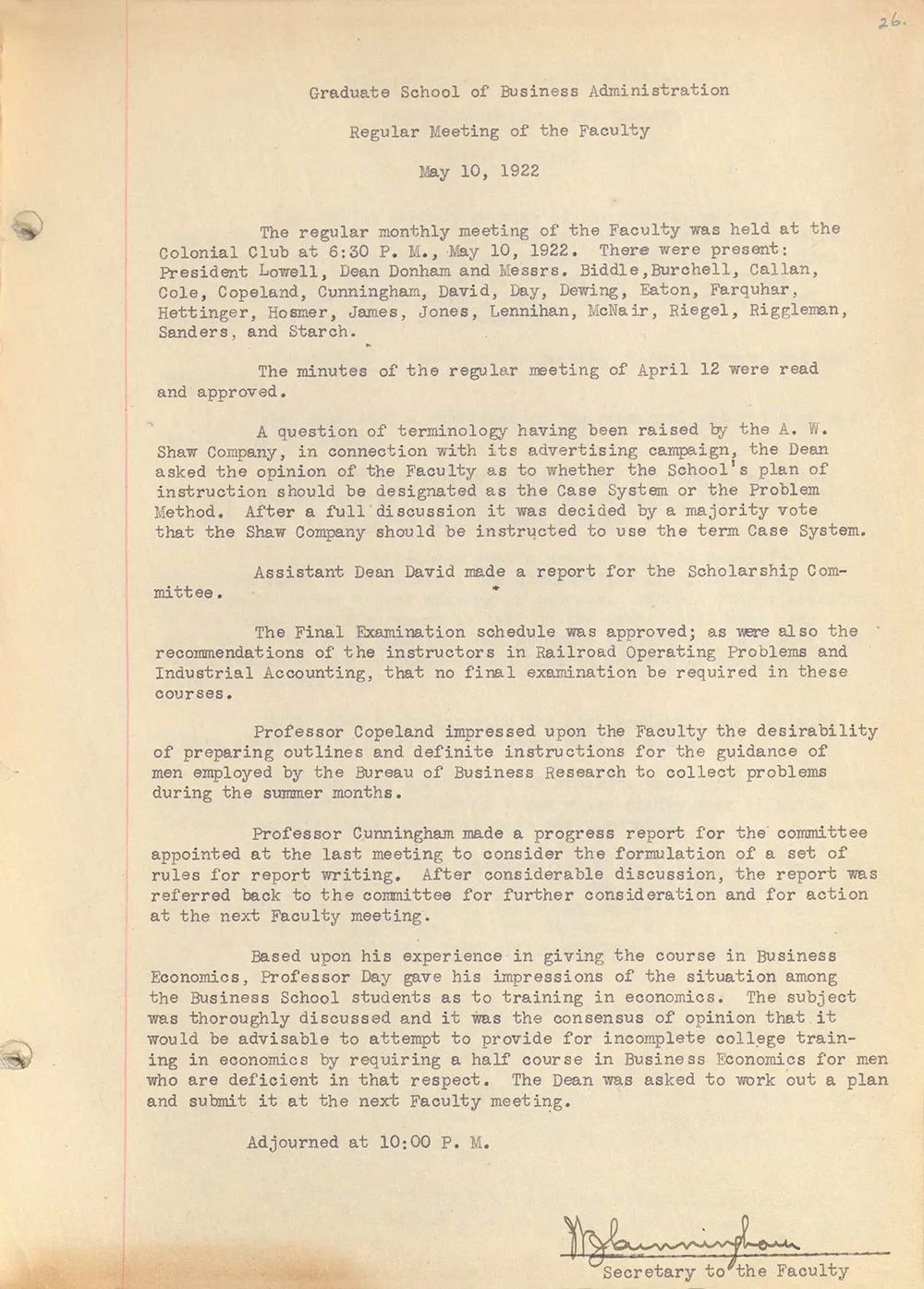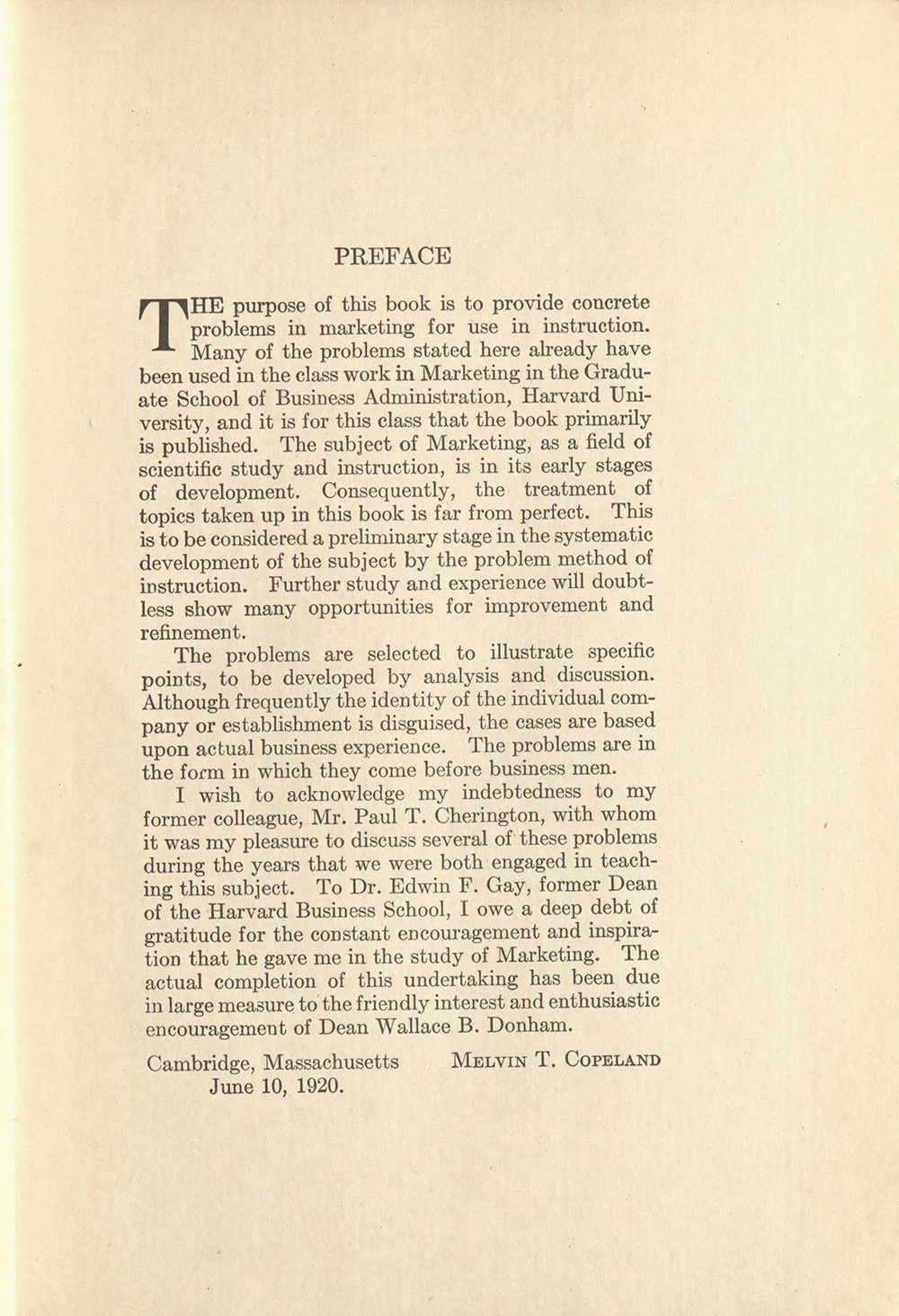Business Education & The Case Method
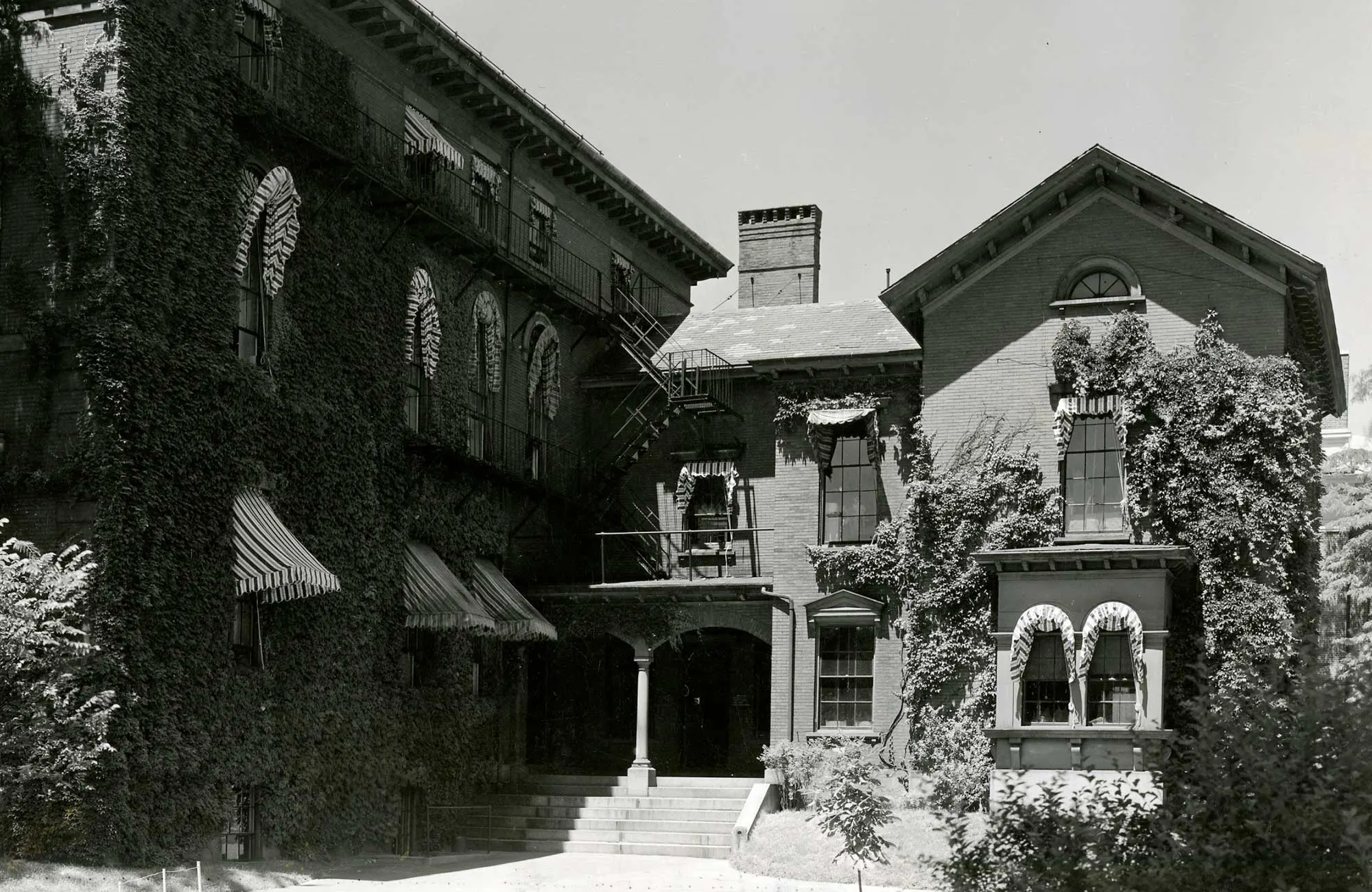
An educational method which compels the student to decide similar problems from day to day . . . must certainly be better preparation for general executive work than any method based primarily on telling the student how to do business.
Dean Wallace B. Donham
Above quote from “Business Teaching by the Case System,” 1922.1
Founded in 1908, HBS was one of the country’s earliest graduate programs in business administration. Management as a profession—and the teaching of management—were new. The School’s first dean, Edwin F. Gay, led the development of the core curriculum for the emerging field of business administration. Before the completion of the Allston campus in 1927, HBS classes took place in classrooms on the Harvard campus in Cambridge.
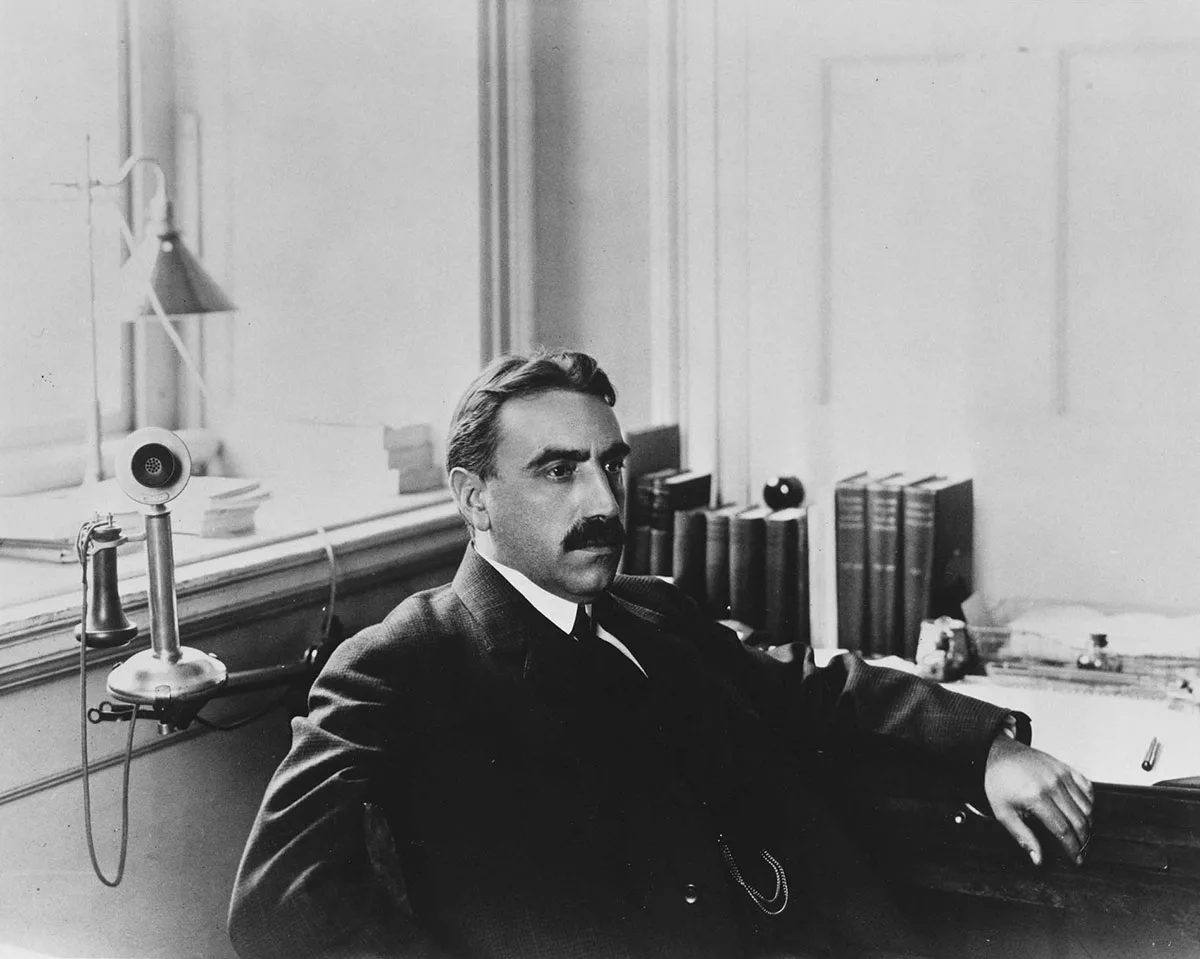
Dean Edwin F. Gay in his office, 1908. HBS Archives Photograph Collection (olvwork375042).
While classes were primarily taught through the traditional lecture method, Gay recognized the importance of drawing on real business situations faced by managers to educate students of business administration. Gay urged HBS Professor Melvin T. Copeland to incorporate active discussions into parts of the course “Commercial Organization and Methods” (later renamed “Marketing”).2 As early as 1911, HBS invited executives to present problems encountered in their businesses for students to solve in the “Business Policy” class taught by A.W. Shaw, a lecturer at HBS whose company published books on management.3
Wallace B. Donham, who became dean in 1919, observed that courses such as “Business Policy” consisted of problems, presented by businessmen, “which customarily go across the subject-matter of various courses. Out of such problems the men rapidly gain a conception of the interdependence of business subjects.”4 “Business Policy” thus illustrated the early efforts of HBS to develop courses about general management that related to many industries, rather than those that specialized in a single industry. HBS continues to value the case method as an approach to teaching general management and leadership skills.
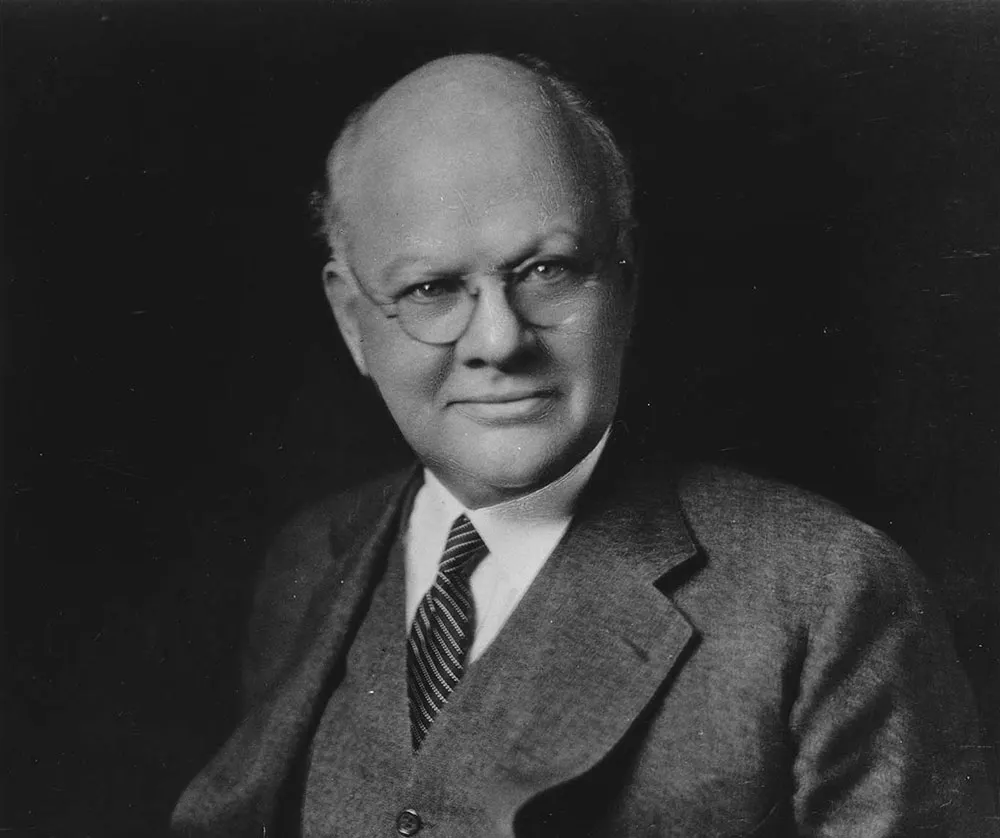
Dean Wallace B. Donham, 1927. HBS Archives Photograph Collection (olvwork374328).
It was through the leadership and vision of Donham that the case method was formally incorporated into the HBS curriculum. A graduate of Harvard Law School, lawyer, and HBS professor, Donham believed in the instructional value of placing students in the role of protagonists solving real-life business problems. He also recognized that while law schools could rely on centuries of common law cases, no such body of work existed for teaching business.
Donham encouraged Copeland to collect and publish real-world business problems related to marketing. The book, Marketing Problems, was published in 1920 and provided material for class discussions. Donham also sought funding to support the research and writing of cases for use in HBS courses. In 1922, the Dean asked for a faculty vote that the instruction method, referred to as the “problem method,” be called the “case system,” reflecting the formalization of the pedagogy at the School.
- Wallace B. Donham, The American Economic Review, March 1922, vol. 12, no. 1, 58. back to text ↑
- Melvin T. Copeland, And Mark an Era: The Story of Harvard Business School (Boston: Little Brown, 1958), 256.back to text ↑
- Copeland, And Mark an Era, 255.back to text ↑
- Donham, The American Economic Review, 63.back to text ↑
